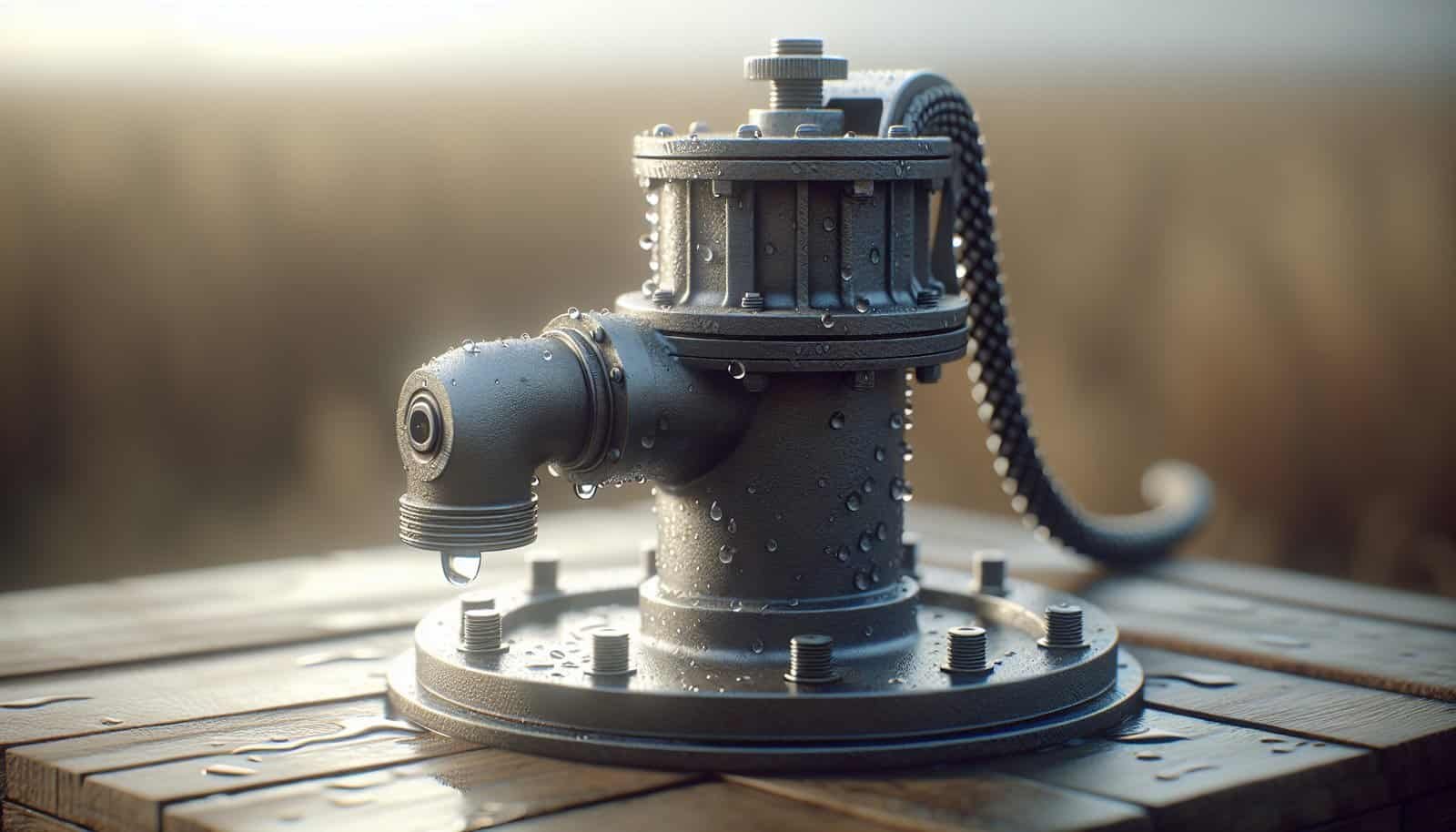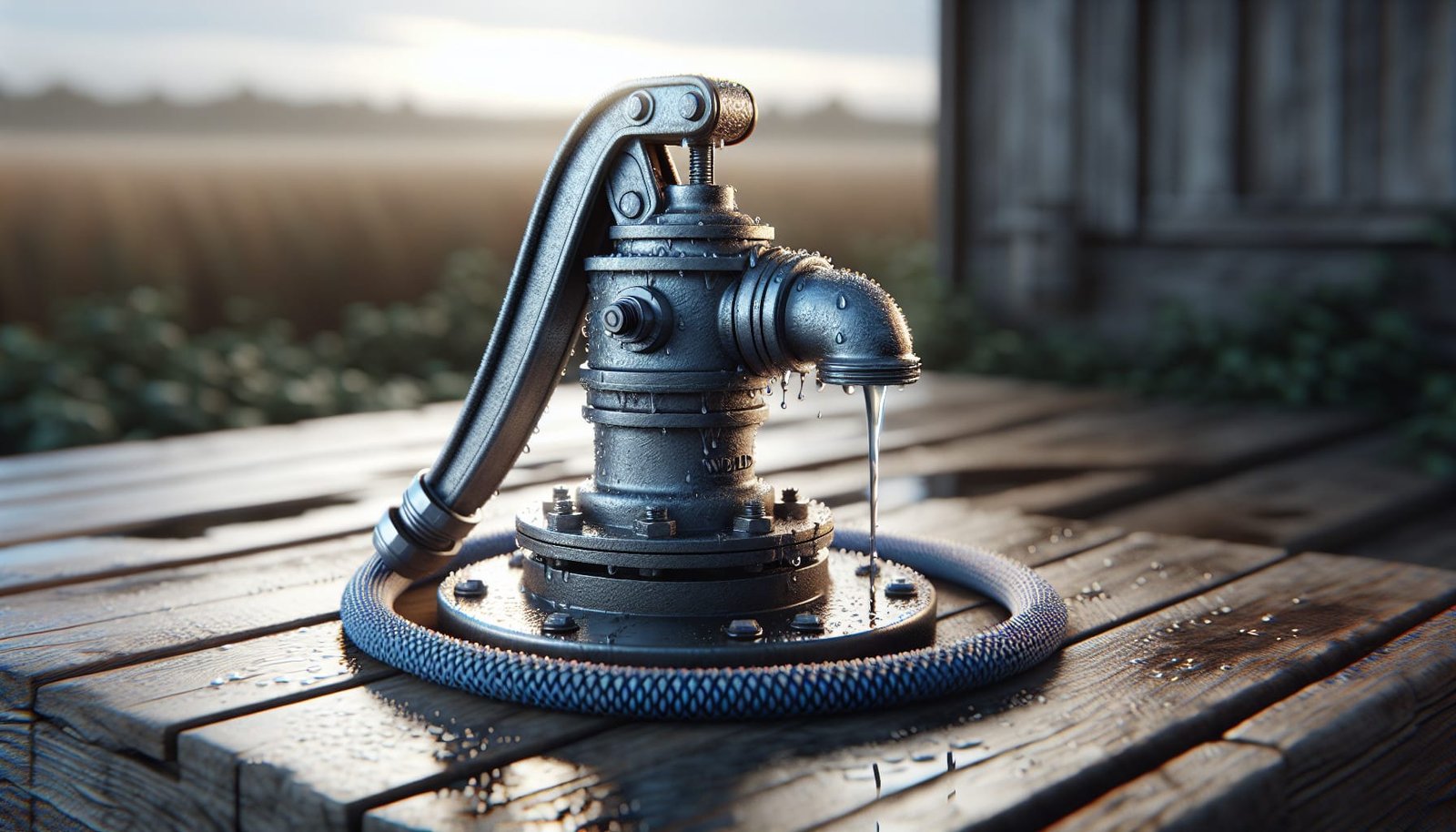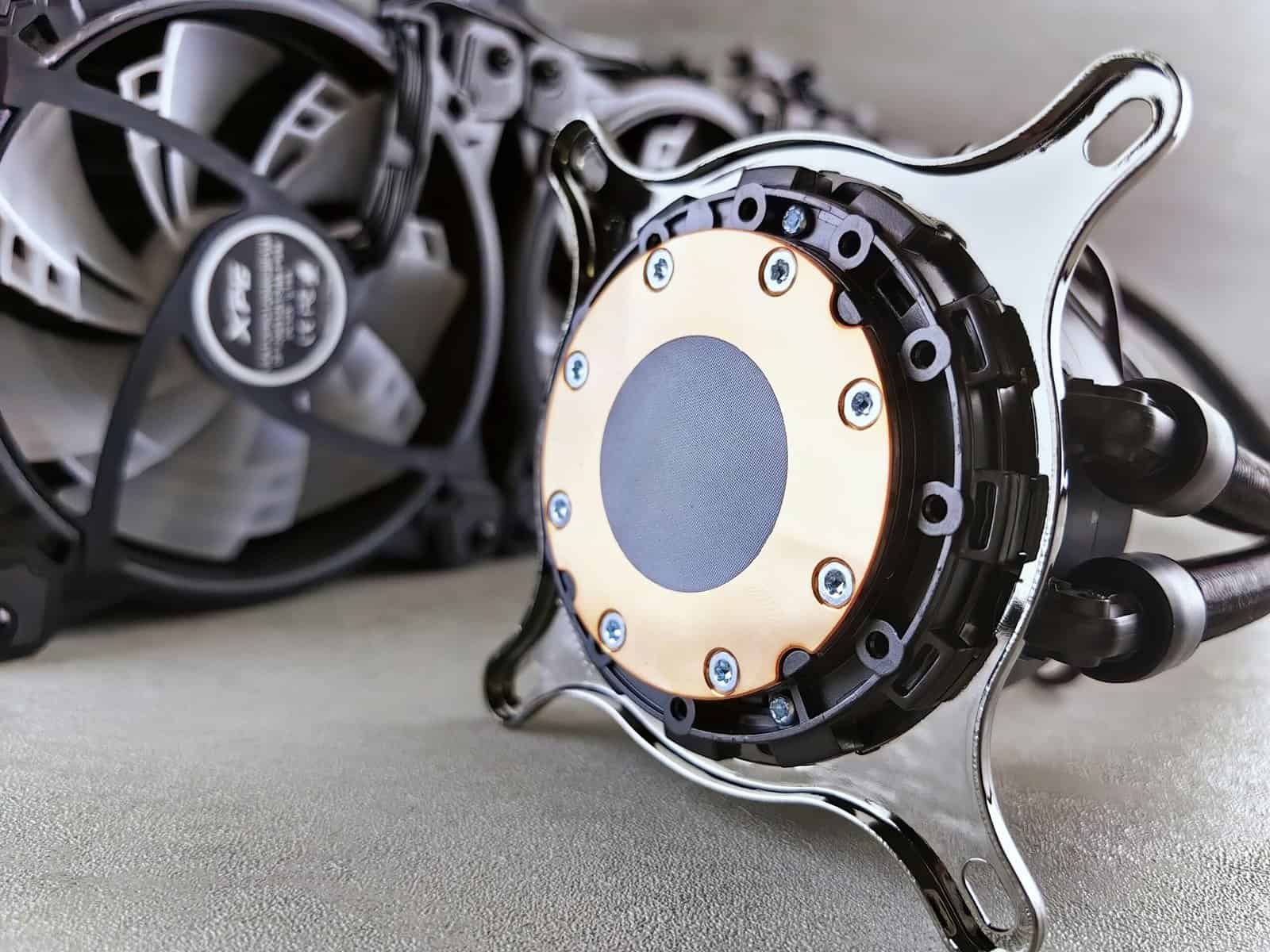?Are you looking for a clear, practical plan to keep your water well pump running reliably and your water safe?
How Do I Maintain My Water Well Pump?
Maintaining your water well pump keeps your household water supply healthy and prevents expensive failures. You’ll want a routine that balances DIY checks with professional inspections so your system operates efficiently and lasts as long as possible.
Basic Components of a Well System
Knowing the parts of your well system helps you understand what to inspect and why. Each component has its own maintenance needs and typical failure modes.
Well Pump Types
Your pump may be a submersible pump (installed in the well) or a jet/centrifugal pump (installed above ground). Submersible pumps are common for deeper wells and typically last longer; jet pumps are used for shallow wells and are easier to service above ground.
Pressure Tank and Pressure Switch
The pressure tank stores water and prevents the pump from cycling on and off too frequently. The pressure switch senses tank pressure and starts/stops the pump. Both affect system cycling and should be checked regularly.
Well Casing and Well Cap
The well casing and cap protect the aquifer from surface contamination. A secure, sealed cap prevents insects, surface water, and contaminants from entering the well, so inspect the cap and casing condition periodically.
Pipes, Valves, and Check Valves
Pipes and valves route water from the well into your home. Check valves keep flow from reversing into the well. Leaks, corrosion, or failed check valves can cause pressure loss and contamination risk.
Control Box and Electrical Components
Electrical wiring, control boxes, relays, and breakers deliver power to your pump. Faulty or loose electrical connections are a common cause of pump failure and pose safety hazards, so inspect electrical components with caution.

Why Regular Maintenance Matters
Regular maintenance prevents unexpected failures, preserves water quality, extends component life, and saves money over time. By identifying small issues early, you avoid emergency pump replacements and protect your water supply from contamination.
Recommended Maintenance Schedule
A consistent schedule helps you prioritize what to check and when. Below is a practical schedule you can adapt to your climate, pump type, and well age.
| Frequency | Tasks | DIY or Professional |
|---|---|---|
| Weekly | Check visible area around well for flooding, damage, or debris; listen for unusual pump noises when operating. | DIY |
| Monthly | Check pressure gauge, look for leaks at fittings, observe pump cycling frequency; run all faucets to confirm flow. | DIY |
| Quarterly | Test water clarity and odor; ensure well cap is secure; check automatic devices (softener, UV) for basic operation. | DIY |
| Annually | Comprehensive water test (bacteria, nitrates, pH, hardness); inspect pressure tank and switch; inspect electrical connections; test flow rate and drawdown. | Professional recommended (some DIY possible) |
| Every 3–5 years | Inspect pump performance and wiring, test well yield; replace pressure switch or tank bladder as needed. | Professional |
| Every 10–15 years | Evaluate pump life; replace submersible pump if necessary; deep cleaning or rehabilitation if water has sand or bacterial issues. | Professional |

Monthly and Quarterly Tasks
Smaller, regular checks help you catch issues early and keep daily operations smooth.
Visual Inspection Around the Well
Look at the wellhead area for signs of erosion, standing water, animal burrows, or damage. A tidy, sealed area lowers contamination risk and makes professional access easier.
Listen and Feel
When the pump runs, listen for unusual humming, grinding, or rapid cycling. Note whether faucets have reduced pressure or sputtering, which indicate pump or pressure tank issues.
Pressure Gauge and Cycling
Check the pressure gauge on your tank and note the cut-in and cut-out pressures. Rapid cycling (short on/off intervals) often points to a failing tank bladder, small leaks, or a bad pressure switch.
Leak and Pipe Checks
Inspect accessible piping, joints, and valves for drips, corrosion, or wet soil. Even small leaks increase pump run time and can lead to bigger problems.
Basic Water Observations
Look for changes in clarity, color, or odor. Turbidity, rusty water, or new odors are early signs of contamination, sediment, or corrosion.
Annual Tasks
Once a year you should perform the more thorough checks and tests that give a clear picture of system health.
Annual Water Testing
Test for total coliform bacteria, E. coli, nitrates, pH, dissolved solids, and other local contaminants. Annual bacterial testing is critical; do more frequent testing if you suspect contamination.
Pressure Tank Inspection
Check the tank’s air charge (for bladder tanks) and inspect for rust or leaks. An improperly charged tank causes the pump to cycle more often, shortening pump life.
Pressure Switch and Controls
Inspect and clean the pressure switch contacts, and verify cut-in/out settings. If the switch shows corrosion or inconsistent operation, replace it.
Flow Rate and Drawdown Test
Measure how much water you get per minute (GPM) and how much the water level drops during pumping (drawdown). These numbers tell you about well yield and whether your pump is sized correctly.
Electrical Inspection
Check wiring for corrosion or frayed insulation, confirm breakers and fuses are in good condition, and make sure grounding is secure. For safety and accuracy, have a licensed electrician or well service pro do detailed electrical checks.
Well Cap and Casing Inspection
Ensure the cap is secure and sealed; look for cracks or gaps in the casing that could allow surface water or contaminants in.

Seasonal Maintenance
Adjust care to the seasons; each brings different stressors.
Winter Preparation (Cold Climates)
Insulate above-ground components and protect exposed pipes to prevent freezing. Make sure any heat source in the well house is functioning. If you have an outdoor pump, confirm the foundation and insulation will prevent cold damage.
Summer Preparation (High-Use Periods)
Summer can be a peak demand season. Monitor for overheating, increased runtimes, and lowered water tables. Consider scheduling a flow and drawdown test before peak use to ensure capacity.
Rainy or Flood Seasons
Ensure the wellsite is graded so surface water moves away from the wellhead. Standing water near a well increases contamination risk.
How to Test Your Well and Pump Performance
Knowing how your system performs under actual conditions helps you know when to act.
Static vs Pumping Water Level
Static level is the water level when the pump is off for several hours. Pumping level is the water level while the pump runs. Compare these to calculate drawdown and available water.
Flow Rate (GPM) Test
Open a large faucet or hose and measure how many gallons per minute you collect. Low flow may indicate pump wear, sediment clogging, or a low water table.
Drawdown Test (Available Water)
Pump the well for a set period while monitoring water level decline. Drawdown reveals whether the well can meet demand without hitting pump suction limits.
Pressure and Cycling Test
Note the pressure cut-in and cut-out settings and time how long the pump runs per cycle. A tank that’s too small or a pressure switch problem will change those timings.

Common Problems and Troubleshooting
You’ll learn to recognize common symptoms and make basic fixes, and know when to call the pros.
| Symptom | Possible Causes | Quick DIY Checks/Actions | When to Call a Pro |
|---|---|---|---|
| No water at taps | Pump failure, power loss, stuck switch, frozen pipes | Check breakers, listen for pump, check pressure gauge | If pump doesn’t run after power is confirmed or pump hums |
| Rapid pump cycling | Bad tank bladder, short drawdown, pressure switch issue | Check tank pressure; replace or recharge air charge | If tank repeatedly loses air or cycling persists |
| Low water pressure | Clogged intake, worn pump, low well yield | Inspect filters, check pressure gauge, measure flow rate | If cleaning doesn’t restore flow or flow continues to decline |
| Discolored/turbid water | Sediment in well, pump draws sand, casing issues | Run water to clear; check for seasonal turbidity | If persistent, has sand buildup, or follows heavy rain |
| Strange noises | Worn bearings, pump cavitation, electrical issues | Note type of sound; listen at control box | For grinding, loud humming, or mechanical clanks |
| Surging or sputtering flow | Air in the system, leaky check valve, failing pump | Inspect for leaks, check pump priming (jet pumps) | If air source or check valve failure suspected |
| Well contamination | Bacterial infiltration, surface runoff | Stop using water for consumption; test immediately | If bacteria, nitrates, or chemicals present |
When to Call a Professional
You can handle routine checks and simple fixes, but call a licensed well contractor or pump technician when:
- There’s no water and the pump won’t run despite power being available.
- You hear grinding, loud humming, or abnormal mechanical noises.
- You detect bacterial contamination, nitrates, or chemical contamination.
- The pump frequently cycles or runs constantly after simple checks.
- You need wiring, motor replacement, or a new submersible pump installed.
- You’re unsure about electrical safety—don’t attempt high-voltage repairs.
Professionals have specialized tools to test motor amperage, measure drawdown accurately, and retrieve submersible pumps safely.

Servicing and Replacement Intervals
Different parts of your system have different lifespans. Planning for eventual replacement reduces emergency repairs.
| Component | Typical Lifespan | Notes |
|---|---|---|
| Submersible pump | 10–20 years | Lifespan depends on water quality (sand shortens life) and run hours |
| Jet pump | 5–15 years | Easier to service above ground but typically wears faster |
| Pressure tank (bladder) | 7–15 years | Bladders can fail and tanks can rust; test air charge annually |
| Pressure switch | 3–7 years | Mechanical contacts wear; replace when inconsistent |
| Check valves | 5–15 years | Failures cause backflow and cycling; inspect periodically |
| Pipes and fittings | 10–50 years | Material dependent (PVC vs galvanized steel) |
| Well casing and cap | 20+ years | Replace cap if cracked or not sealed; casing may need rehab if compromised |
Disinfecting and Shock Chlorination
If testing shows bacterial contamination, you may need to disinfect (shock) the well. This process uses chlorine to kill bacteria.
When to Shock Chlorinate
Shock the well after contamination events (flooding, surface runoff near the well), new well construction, or animal/soil intrusion. If bacterial tests are positive, disinfecting is often necessary.
Basic Shock Chlorination Steps (General Guidance)
- Calculate the volume of water in your well to determine chlorine amount.
- Use unscented household bleach (5–6% sodium hypochlorite) or pool chlorine per recommended dose.
- Pour chlorine solution into the well and circulate through the plumbing by running faucets until a chlorine smell is present at all outlets.
- Let the system sit for 12–24 hours (follow local guidance or service recommendations).
- Flush system until chlorine smell is gone and retest water to confirm bacteria are eliminated.
Note: Chemical handling, accurate dosing, and proper disposal of chlorinated water matter. If you’re uncomfortable, hire a professional well contractor to disinfect the well.
Safety and Legal Considerations
Safety and compliance protect both you and your water source.
Electrical Safety
Always shut off power before inspecting electrical components. High-voltage systems can be lethal. If you don’t have electrical experience, call a licensed electrician.
Chemical Safety
When handling chlorine or other disinfectants, use gloves and eye protection, and follow manufacturer labels. Keep chemicals away from children and pets.
Regulatory Requirements
Some locales require certified contractors for well work, or pre-approval for well alterations. Water testing for public health agencies may need certified labs. Check local regulations before major work.
Preventing Contamination
Maintain setbacks from septic systems, fuel tanks, and agricultural chemicals. Keep the area around the well clear of debris and avoid storing hazardous materials nearby.
Tools and Supplies You’ll Need
Having the right tools saves time and keeps you safe during routine maintenance.
| Tool/Supply | Purpose |
|---|---|
| Pressure gauge | Verify tank pressure and switch settings |
| Tire or air pump with pressure gauge | Re-pressurize bladder tanks |
| Basic hand tools (wrenches, screwdrivers) | Tighten fittings, switch covers, etc. |
| Flashlight | Inspect wellhead and enclosed areas |
| Water test kits or sample bottles | Collect samples for certified lab tests |
| Chlorine bleach and measuring devices | Shock chlorination (if needed) |
| Protective gloves and eyewear | Chemical and mechanical protection |
| Sand/sediment filter (temporary) | Test if sand is present in water |
| Notebook or logbook | Record maintenance and test results |
Record-Keeping and Monitoring
A maintenance log helps you track system health, spot patterns, and provide useful history for a professional.
What to Record
Note dates, tests performed and results, pressure readings, flow rates, parts replaced, service calls, and any unusual events (flooding, heavy rain, drought). Keep receipts and model/serial numbers for equipment.
Why It Helps
Records make troubleshooting faster, support warranty claims, and help you understand long-term trends that affect pump life.
Cost Estimates and Budgeting
Budgeting ahead lets you avoid surprise expenses when components fail.
- Annual water tests: $50–$200 depending on tests and region.
- Service visit (inspection, basic maintenance): $100–$300.
- Pressure tank replacement: $200–$1,000 depending on size and type.
- Pressure switch replacement: $75–$200 (DIY possible).
- Submersible pump replacement: $800–$3,000+ depending on depth, pump type, and installation labor.
- Well rehabilitation or deep cleaning: $500–$2,000+.
Prices vary by region and system complexity. Prioritize preventive care—small annual costs often avoid much larger emergency replacements.
Tips to Extend Pump Life
A few habits reduce stress on your pump and improve efficiency.
- Avoid running dry: Always monitor usage during drought or high demand. Dry running quickly damages pumps.
- Manage demand: Stagger water-heavy tasks (laundry, irrigation) to prevent simultaneous high draw.
- Maintain the pressure tank: Keep it properly charged to minimize cycling.
- Filter sand and sediment: Install a sediment filter if you notice sand; sand erodes pump parts.
- Treat water for corrosive conditions: If water is acidic or hard, water treatment reduces internal corrosion and scaling.
- Keep equipment shaded and protected: Temperature extremes and direct sun can accelerate wear of above-ground components.
Final Checklist You Can Use
Keep this checklist handy to perform regular maintenance and prepare for professional visits.
- Inspect wellhead, cap, and area for damage or standing water.
- Check pressure gauge and note cut-in/out pressures.
- Listen for unusual pump noises during operation.
- Inspect pipes, fittings, and valves for leaks or corrosion.
- Run water from multiple fixtures to confirm flow and pressure.
- Test water for bacteria annually; test additional parameters as needed.
- Check pressure tank air charge and adjust if necessary.
- Schedule annual professional inspection and flow/drawdown test.
- Keep a log of findings, tests, and service visits.
- Prepare emergency contact list for certified pump technicians and local health department.
Summary
You can protect your water supply and extend your system’s life by performing routine inspections, testing water annually, and scheduling professional evaluations at recommended intervals. Monthly checks, seasonal preparations, and careful record-keeping will alert you to problems early, while understanding signs of failure helps you decide when to take action or call a technician. With a consistent maintenance schedule and sensible budgeting, you’ll keep your well pump reliable, efficient, and safe for years to come.

